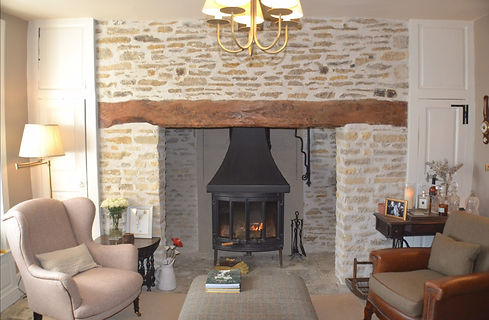
Our Story
So few historic buildings are worked on with a confident and competent use of traditional materials, despite it being essential for their health and longevity. Most owners have a deep desire to care for their beautiful and characterful homes and in the case of those who own listed buildings, they have a legal responsibility. This can be incredibly daunting and frankly, it can be exceptionally difficult to find an appropriately skilled person to trust with your home.
Russet and Sage Ltd is a family run company that seeks to safeguard Britain's historic buildings. It was started in the hope that the built history of Britain will survive by providing services that empower owners.
Thomas Harris has worked with a specialist in conservation mortars for a number of years and in this time, he has developed a deep passion for historic buildings and their unique fabrics. He learned to use all types of limes in a variety of applications. For the last several years, he has been putting those skills to use whilst renovating his Grade II listed family home. Russet and Sage was started in order to bring his accumulated knowledge and experience to the wider historic, built environment.
Tom has worked in the Fire and Rescue Service since 2010 and serves his role as a full time Watch Officer. He continues to help people care for their homes around his shift pattern.


Lime mortar repointing
Repointing should go beyond the purely mechanical and functional. It should also be beautiful. Safeguarding historic buildings isn't just about the use of correct materials and techniques, it means ensuring the building is desirable, loved and cared for by the all of its future owners.
We work with all forms of lime, from quicklime hot-mixing to putty, hydrated lime and natural hydraulic lime. The correct type will be selected depending on the nature of the job. Factors affecting the choice of lime include the time of year, weather exposure and moisture levels in the wall. Our repointing is meticulous. Each square inch should be tended to carefully to avoid cracks and brush lines through the mortar.
Lath and lime plastering
So many tradespeople are loathed to discover original lath and lime plaster and are quick to replace it with plasterboard but it's so simplistically beautiful whilst being incredibly effective. It is, however, comparatively time consuming and labour intensive. That being said, nothing compares to the subtle undulations and texture of traditional lime plasters. Not to mention the fact it copes far better with movement and temperature changes in the building whilst effectively managing moisture.


Stone replacement and repair
It is rare to find a historic building with no stone damage but they do exist. When found, they will have all original lime pointing. Every single time cement is put into historic buildings, it is done at the cost of the substrate whether it's brick or stone. This damage should be rectified. When dealing with the brick/ stone it's not always appropriate to replace them whole, particularly if they lend themselves to the historic nature of the building and less so if they are simply irreplaceable. In that case, the stone should be carefully repaired to match colour, texture and character.
Fireplace restoration
The fireplace is the heart of the home and the fact that the draw of the fireplace and its moisture-free heat both contribute to warm, dry homes is infrequently understood.


Materials
Russet and Sage carefully consider the use of materials to ensure an effective and appropriate restoration. We are proficient with all limes including quicklime, lime putty, hydrated lime and all strengths of natural hydraulic lime. Combined with appropriately chosen sand mixes and pozzolans where required, you can be sure that the work is traditional, beautiful and conforms with conservation standards.
Sustainability within the built environment
What is lime mortar?
Limestone is burnt in a lime kiln which releases carbon dioxide and turns it into quicklime. When mixed with water, the quicklime slakes and produces lime putty (or a 'hot-mixed' mortar when sand and water are added together). Once these limes are applied to a building, the lime carbonates. This means the lime sequesters a high percentage of the carbon dioxide lost during the burning process. The lime in lime mortar effectively turns back to limestone.
The carbon cost of lime compared to cement is dramatically lower for this reason.

